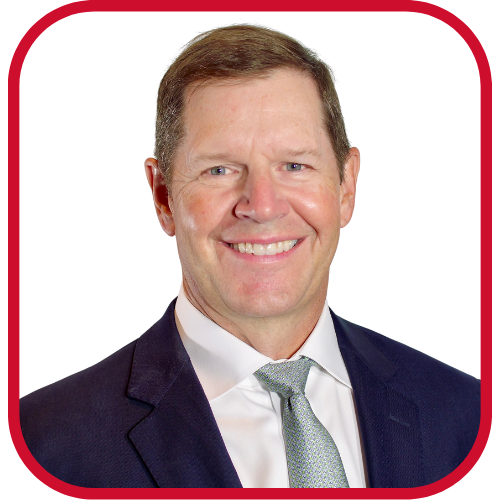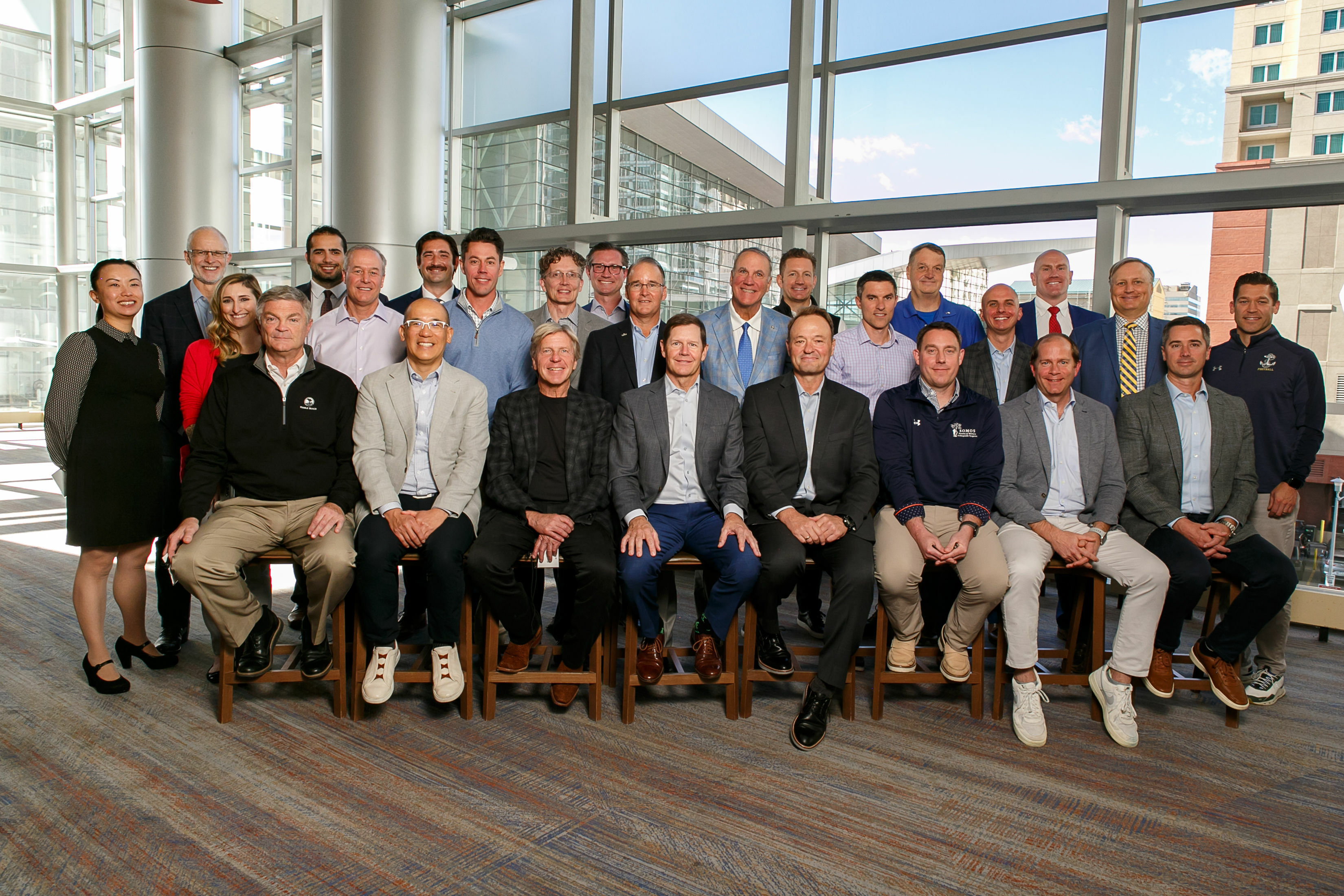As surgeons, collaboration is built into our profession. Even the most gifted surgeon needs a team to successfully manage patient care.

In sports medicine, the team takes on even more importance as athletic trainers, coaches, and other providers—as well as parents and other decision-makers—collaborate to keep an athlete healthy and in the game. This collaborative approach is in my sights every time I step into the operating room as highlighted in my recent conversation with Dr. Bruce Reider on his podcast, Easy Reider.
Finding a connection and getting to know people on a human level creates a more engaged process which positively benefits professional education, innovative research and, most importantly, patient outcomes. This is a mission shared by the American Orthopaedic Society for Sports Medicine, where we “Lead Collaboratively” to improve care for athletes and active people of all ages and abilities. In our Society, we foster collaboration among Members, across centers and practices, and between other societies and professions.
I had the privilege of experiencing one of these collaborations, the AOSSM Traveling Fellowship program as a fellow to Asia and the Western Pacific in 1993 and again in 2005 as a “godparent” to Latin America. In partnership with Asia-Pacific Knee, Arthroscopy and Sports Medicine Society (APKASS), the European Society for Sports Traumatology, Knee Surgery and Arthroscopy (ESSKA), and the Sociedad Latinoamericana de Artroscopía, Rodilla y Deporte (SLARD), along with long-time Traveling Fellowship partner Enovis (formerly DJO), this program fosters a global exchange of ideas that helps create progress and innovation. I was so inspired by this international collaboration that I founded the Magellan Society in 1995 as the alumni organization for sports medicine Traveling Fellows and godparents, to continue the conversations and collaborations across borders and generations.

In addition to collaborating with international organizations, your AOSSM leadership has emphasized collaboration with national societies. For example, our combined ASES-AOSSM Specialty Day at the AAOS Meeting in San Francisco was a tremendous hit, highlighted by AOSSM Past President Bob Arciero’s Kennedy Lecture. My last column discussed how collaboration is driving discovery through research, highlighted by the MAST grant, a partnership between the Arthroscopy Association of North America (AANA), the Society of Military Orthopaedic Surgeons (SOMOS), and AOSSM. In addition to the MAST collaboration, I am excited to share that AANA and AOSSM are working together on collaborations in fellowship education, and on arthroscopic surgical skills education and assessment. Our partnership with SOMOS continues to grow, too. In January, SOMOS hosted its annual Extremity War Injuries conference, which AOSSM has proudly supported for many years. Many AOSSM leaders and researchers joined representatives from the military and government agencies, all working together to provide the best possible injury prevention and treatment strategies for the brave individuals who serve and have sacrificed for our country.
We also announced a new grant opportunity that embodies the spirit of collaboration in orthopaedic surgery. The Return to Play grant will award up to $200,000 to support a clinical research project investigating return to play after musculoskeletal injury. This exciting project is a partnership with Arthrex, The Aircast Foundation, The FORUM, and the J. Robert Gladden Orthopaedic Society designed to encourage accelerated return to play utilizing innovative technology and techniques while supporting diversity in orthopaedic sports medicine research.
The Gladden Society has also been a key collaborator at the AOSSM Annual Meeting for the last several years. This July in Denver, they will co-host the first Game Changer, “The Unequal Playing Field—Addressing Health Disparities in Sports Medicine.” The session features podium research, a panel discussion and a guest lecture from Billy McMullin, former NFL player and founder of Spark Talk, to illustrate the collaboration it will require to address inequities in sports medicine patient outcomes.
We also have two outstanding sessions that feature sports medicine teams collaborating with their elite patients on holistic athlete care. In “The Winning Playbook for Elite Athlete Care” on Saturday morning, Annual Meeting Program Director Alison Toth will lead a New York Giants team of experts, including legendary former player turned broadcaster Tiki Barber, long-standing head athletic trainer Ronnie Barnes, ATC and esteemed team physician Scott Rodeo, MD in a high-level discussion on injury prevention and treatment, return-to-play decisions, mental health, off-field influences and much more from the perspectives of the medical team and the athlete. Later that day, “Going for the Gold” will feature Olympic skier and eight-time national champion Nina O’Brien alongside her surgeon and Olympic Team physician Tom Hackett, MD and ACSM exchange lecturer Jonathan Finnoff, DO, FACSM, Chief Medical Officer of the US Olympic and Paralympic Committee.
In fact, the entire meeting will bring together our collaborative partners: The FORUM will once again host a session (and I highly encourage you to read the article in this issue from DEI Committee co-chair Constance Chu, MD, on AOSSM’s growing collaboration cross-society collaboration with The FORUM!). Colleagues from ISAKOS, SLARD, and ESSKA will present, and the OLC will bring the popular Mobile Lab to our re-imagined exhibit hall – The Fieldhouse. I am looking forward to welcoming all of these partners—and you—to beautiful, family-friendly Denver.
This is only a partial list of our many partnership and outreach efforts. We help bring vital awareness to youth sports through the STOP Sports Injury program with the National Council of Youth Sports (NCYS) and the vital Smart Heart Coalition in partnership with the NFL. AOSSM experts contribute to national and international team physician consensus statements. We also have worked diligently with the Department of Justice and the US Center for SafeSport to bring valuable tools such as on-demand training modules focused on athlete protections, and the inter-association Collegiate Standard of Care toolkit led by our friends at the National Association of Athletic Trainers (NATA). There are simply too many partners to share in one issue and I’m deeply grateful to every practitioner who has volunteered their time and talent to these collaborations.
Bringing together people with diverse experiences and expertise helps build successful healthcare organizations and creates better communities, and AOSSM is no exception. The more colleagues we meet to share knowledge and insight, the more potential exists for innovation and advancement through collaborative leadership. As the African proverb says, “If you want to go fast, go alone. If you want to go far, go together.” We want to go far, and together the sky’s the limit on what we can collectively accomplish. The best is yet to come!

